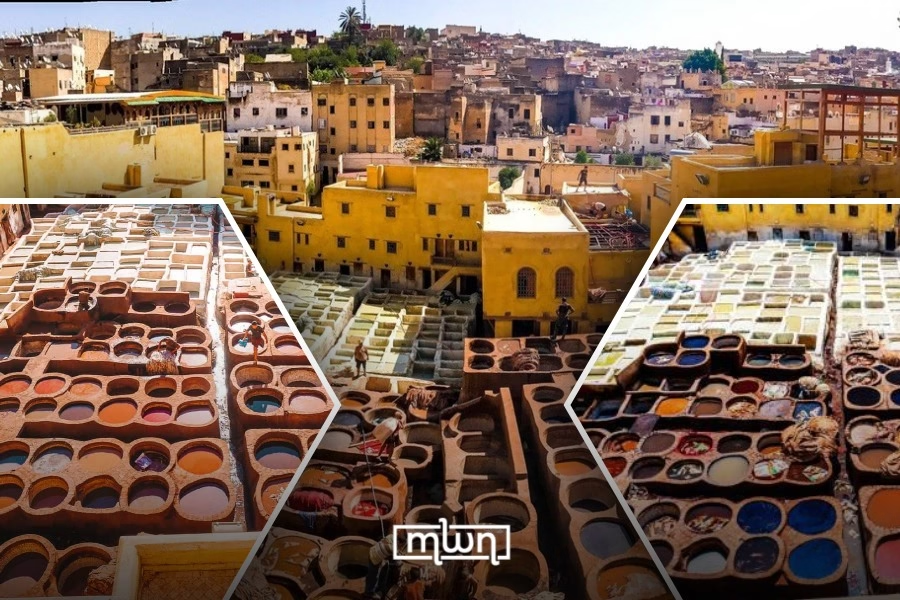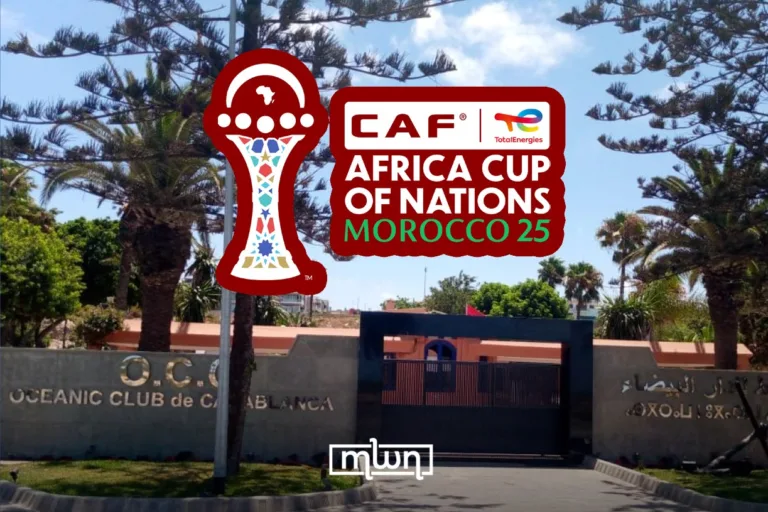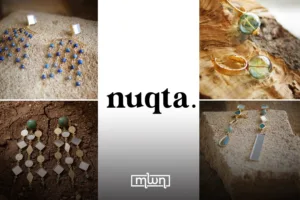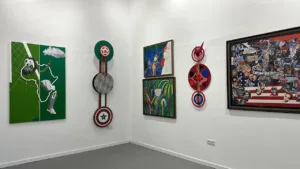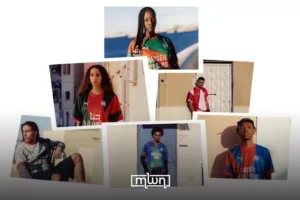Behind high walls and heavy scents, a centuries-old rhythm continues.
Fez – Tucked inside the winding alleys of Fez’s old medina are some of the last remaining vestiges of a craft that shaped not only the city’s economy, but its very identity.
The tanneries, known locally as “Dar Dbagh,” are more than just workspaces for leather; they’re complex social and historical systems that have endured for centuries.
Fez was once home to more than a hundred tanneries. During the Almohad period (12th–13th century), The number reached 86 during the Almohad period (12th–13th century), and it climbed to nearly 100 by the Marinid era.
Only three remain active within the medina walls today : Dar Dbagh Sidi Moussa (also called Kornez), Dar Dbagh Ain Zliten, and the most iconic, Dar Dbagh Chouara.
These are not just production sites, they are architectural and functional ecosystems.
Chouara, the largest and most visited tannery, dates back to 1326. Built on the edge of the Fez River, like all tanneries, its layout resembles a honeycomb: dozens of stone vats filled with water, dyes, and ancient mixtures used to soften and color hides.
From above, the tannery looks almost painterly, rich earth tones, jewel-toned liquids, and men submerged waist-deep, working barefoot in a choreography of labor passed down through generations.
At the height of its prominence, tanning was a highly profitable trade. So profitable, in fact, that locals called the tannery “Dar Dheb”: the House of Gold.
Tanner families were financially stable, socially active, and politically engaged. They took part in major national uprisings like those of 1944 and 1953, often at great personal cost.
But the significance of these spaces wasn’t purely economic or political. The tannery brought together a cross-section of Fez society: established families, newcomers, artisans, and tradesmen.
Many of the tanners were also affiliated with local religious brotherhoods or involved in the spiritual and cultural life of the city.
Their patron saint, Sidi Yaacoub Dbagh, was said to have worked in one of Fez’s oldest tanneries.
His legacy, along with that of others like Sidi Abdelaziz Dbagh, continues to be woven into the oral and spiritual traditions surrounding the trade.
The tanning process itself is brutal, unglamorous, and remarkably complex. Animal hides are soaked in mixtures that include cow urine, pigeon droppings, lime, and salt before being softened and dyed using natural pigments: henna, pomegranate peel, saffron, poppy flower, and indigo stone among them. It takes weeks of labor before a single hide is ready for use.
Today, the industry is shrinking. Mass production, synthetic chemicals, and environmental concerns have all taken a toll.
Many tanners have had to adapt, introducing chemical shortcuts to stay competitive, often at the expense of both tradition and sustainability.
Yet even in decline, Fez’s tanneries remain deeply symbolic. They are proof that craftsmanship, when embedded in community and history, becomes more than a job.
It becomes memory, resistance, and identity, all imprinted into the very leather that once traveled from these vats to markets across the Mediterranean.
Read also: Fatima Zahra, Roses, and the Power of Local Beauty in Kalaat M’Gouna

